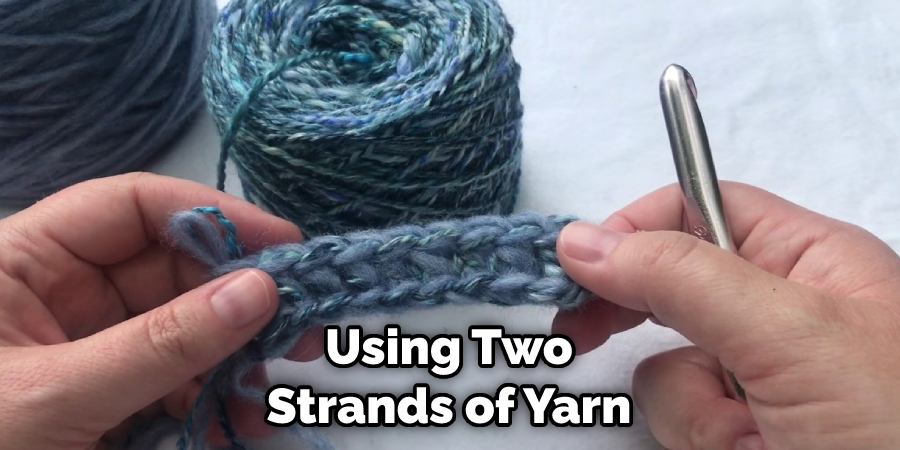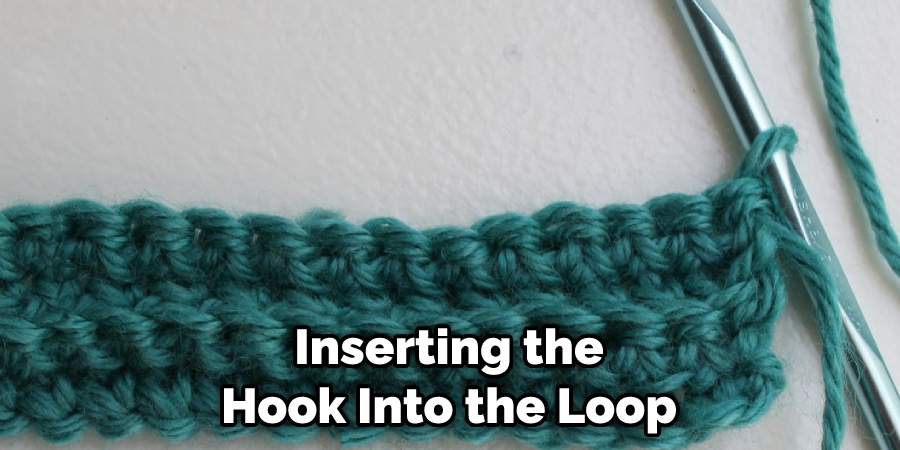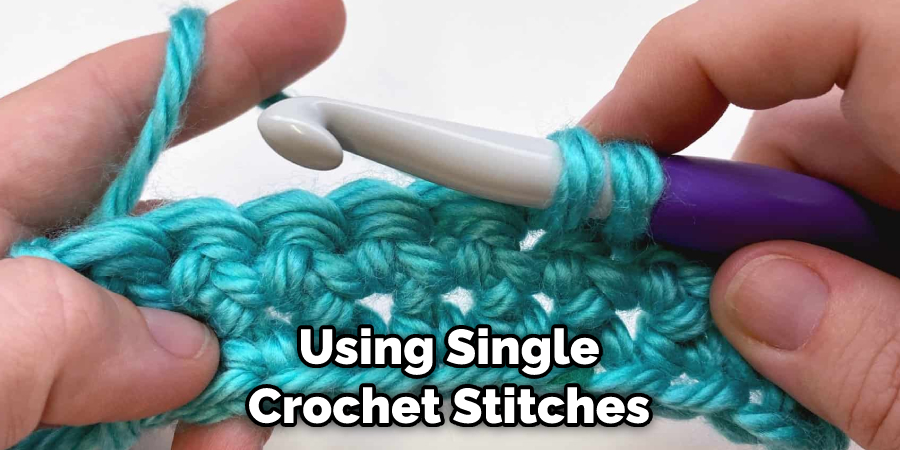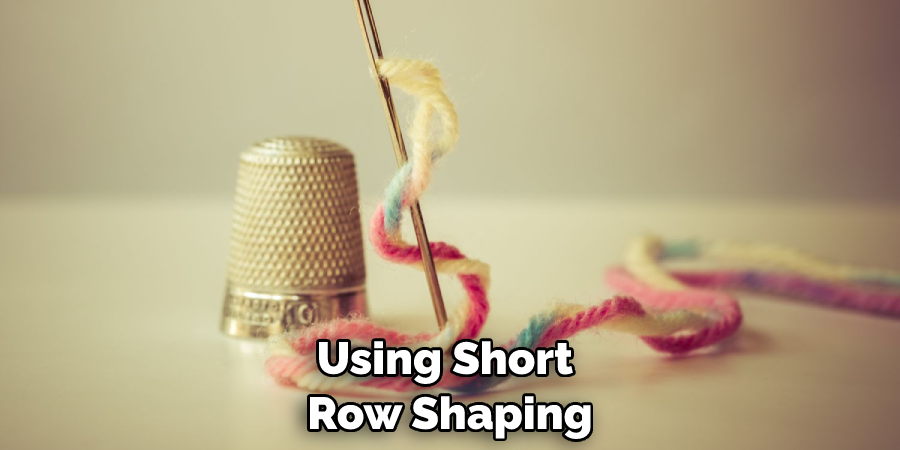For crafters of all levels, if you’re looking for a project that’s both useful and rewarding, learning how to crochet a produce bag is the perfect project! Whether you like to stick with traditional patterns or put your own creative spin on things, this eco-friendly craft will help out Mother Nature while satisfying your inner embroiderer.

With some basic supplies like knitting needles and yarn, in no time at all, you can have an adorable custom-made reusable produce bag that’ll add an extra pop of style as you stop by the farmers’ market or grocery store. In this blog post, we cover all the steps, from gathering materials to resources for informative videos so even beginners can learn how to crochet their own handy dandy produce bag!
What Yarn to Use for Crochet Market Bag?
When selecting yarn for your crochet produce bag, there are a few considerations to keep in mind. First, opt for a high-quality yarn that is durable and will stand up to the wear and tear of the bag’s use. Cotton or hemp yarns are great options as they provide good strength and breathability. The weight of the yarn you choose will also affect the size of your bag.
Thinner yarns such as lace weight, sport weight, or DK (double knitting) weight will create a smaller bag, while heavier yarns like worsted weight and bulky will produce a larger one. Additionally, the type of fiber- blend you select is important when considering how it may impact the breathability of the bag. Blends such as cotton acrylic, cotton linen, or cotton bamboo are ideal for a crochet market bag.
Finally, consider how much yarn you need to do your project. Most produce bags require about two skeins of yarn, but this can vary depending on size and fiber content. With these factors in mind, you’ll be able to select the perfect yarn for your crochet project! Additionally, you can find tutorials online that provide great guidance on how to crochet your market bag.
10 Methods How to Crochet a Produce Bag
1. Gather Materials:
To crochet a produce bag, you will need a crochet hook, yarn, scissors, and a tapestry needle. Choose colors that coordinate with the type of product you plan to store in the bag. For example, pick green for produce such as cucumbers and white or cream for light-colored produce like mushrooms or apples.
If you have a pattern, get the recommended hook size. If not, use a medium-weight yarn and an H (5 mm) hook. While some people crochet bags with plastic grocery store bags as the lining, using two strands of yarn for each stitch gives your bag added strength and durability.

2. Select Stitch Type:
Choose the proper stitch type based on the size of your project and your desired look. A single crochet stitch is best for small items like bottle holders, whereas a double crochet stitch works well for larger items such as bags.
If you are unsure which stitch to use, consult an experienced crocheter or pattern guidebook for guidance. While a single crochet stitch will provide a denser, more structured piece, a double crochet stitch creates a looser and lighter product. Though it is possible to use a crochet hook as small as 1.5mm, many people find it easier to work with a hook between 3 and 4mm in size.
3. Build the Base:
Start by creating a chain of stitches at least 8 inches long. This will form your base and can be expanded upon when adding increases later on in the pattern. Once complete, join it together with a slip stitch to create one continuous circle of stitches rather than multiple sections of chains connected by slip stitches.
You can then start your single crochet stitches by inserting the hook into the loop of the first chain stitch and making a slip knot. After that, continue the single crochet stitches to the end of the chain. When you reach the last stitch, join it together with a slip stitch. Now your produce bag has a base!

4. Add Increases:
Increase along each side of your pattern by inserting two single crochets into each loop as you go around until you reach the desired width or length measurement needed to complete your bag size. As an alternative, increase only along one side rather than both sides if you would like to create a more rectangular-shaped bag instead of a circular shape when finished stitching all rounds together.
Continue adding increases until you have the desired width or length of your produce bag. If you would like a thicker, more durable bag, then add increases until it is twice the size of your desired finished product. Make sure to continue to count your stitches as you add increases to ensure the bag has an even number of stitches all around.
5. Work in Rounds:
Work several rows in rounds without any increases to add height to the project and make sure that each row is stitched tightly using even tension throughout every round so that there is no gap between stitches when completed. When reaching the desired length required for your project, begin the next round by increasing stitches in multiples of two.
Work this increase around the entire bag, and continue working even rounds until it reaches the desired height. Commonly this would be when the bag is around 10-15cm (4-6 inches) tall, but the desired size will depend on personal preference. Finally, work one last round to even out the shape of the bag and add a final flourish with a decorative stitch such as a shell or reverse single crochet. Congratulations, your produce bag is now complete!
6. Reduce Stitches:
Decrease evenly along both sides if necessary until your row measures four inches shorter than the original chain measurement. Stitches should be decreased in a pattern that is consistent with the original stitch type used to create the bag. For example, if you are using single crochet stitches, decrease each side by one single crochet every other row until the desired length has been achieved.

This will help maintain an even shape for your bag as it gets shorter in height. Once the desired height has been reached, finish off with a slip stitch in the last stitch and cut your yarn. Weave any remaining ends into the bag.
7. Finish Off:
Cut off excess yarn leaving several inches free, then thread the tapestry needle through the remaining loops on the needle before pulling tight and weaving in yarn ends securely around the backside of the project, securing all remaining stitches before snipping off any remaining threads hanging loose from edges. Finally, enjoy your handmade produce bag and the satisfaction of a job well done!
To ensure durability, it is highly recommended to block and stiffen the bag. This can be done by washing your finished produce bag in cold water before laying the bag out flat on a towel to dry. Once completely dry, use spray starch (or an alternative solution of one part white vinegar to four parts water) and iron while damp. This process should ensure that your bag maintains its shape and size, lasting for many grocery trips to come. Now you are ready to fill your handmade produce bag with fresh fruits and vegetables!
8. Add Accents & Embellishments:
To give the bag more personality, sew on decorative buttons, ribbons, or appliques along the top edge or bottom corners while also weaving colorful metallic cords along the sides between rows to create fun texture effects as needed. The bag can also be decorated with fabric paints or markers, and the finished product can be embroidered with lettering to create a custom label. Finally, stickers and other manufactured embellishments can help make the bag stand out on its own.
9. Optional Tassels:
Thread lengths of cord or colored strings through single crochets found below the top edge using a tapestry needle before tying off ends and trimming excess threads at the end before braiding strands together into one tassel-style piece hanging down from the top edge if desired.
10. Test It Out:
After completing all steps above, try out the finished product by filling it up with fresh veggies from the farmer’s market before heading home! Make sure that it is strong and secure enough to support the weight of your produce. You should also be able to comfortably carry the bag around without any problems. If you have any issues, don’t hesitate to go back and reinforce the stitches or add another round for extra support.

Conclusion
Now that you know how to crochet a produce bag, put your new skill to use! By ditching single-use plastic bags in favor of these sustainable and reusable options, you can help reduce your environmental impact. Not to mention, it’s a great way to show off your personality and style when you’re at the grocery store. So what are you waiting for? Get crocheting!


